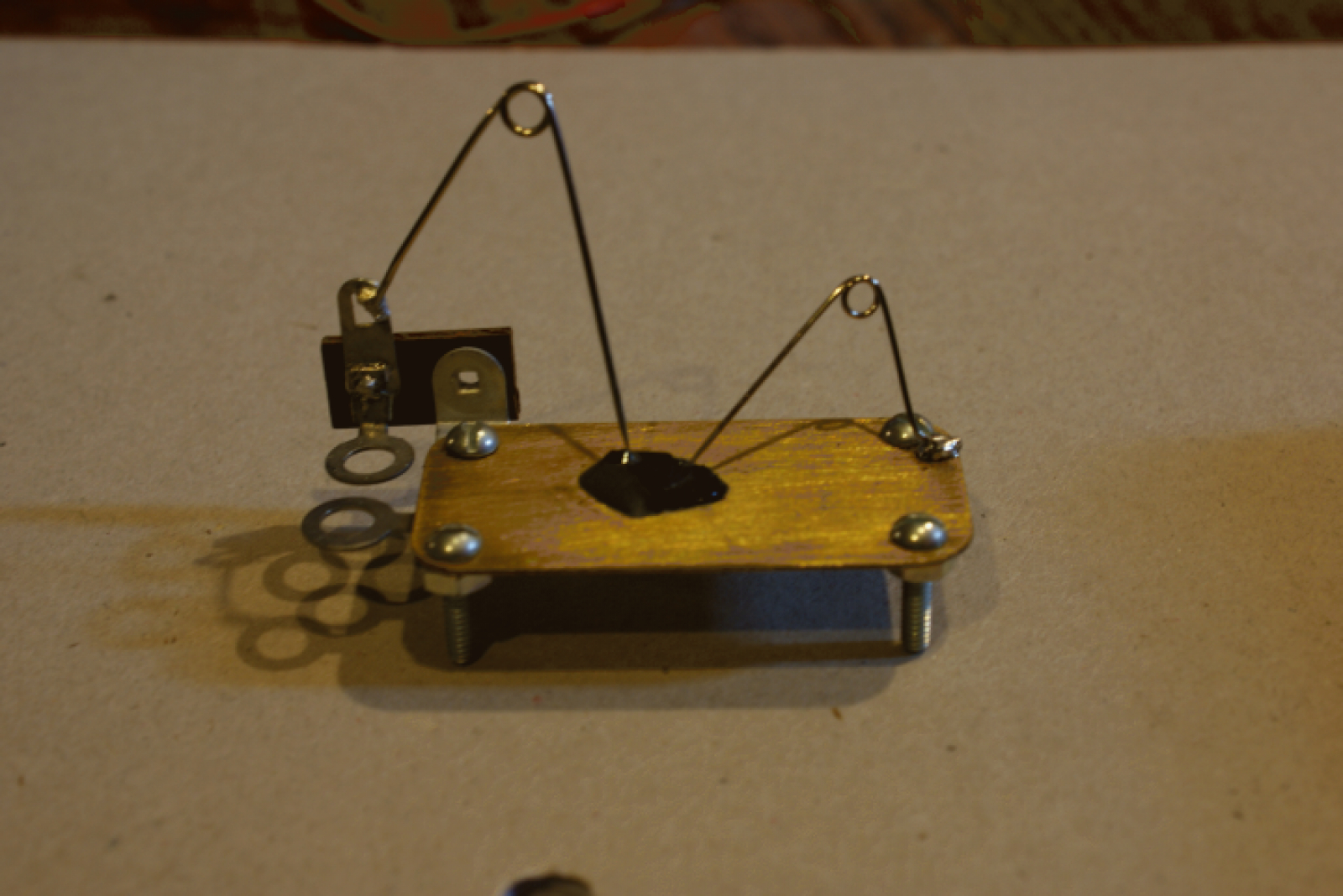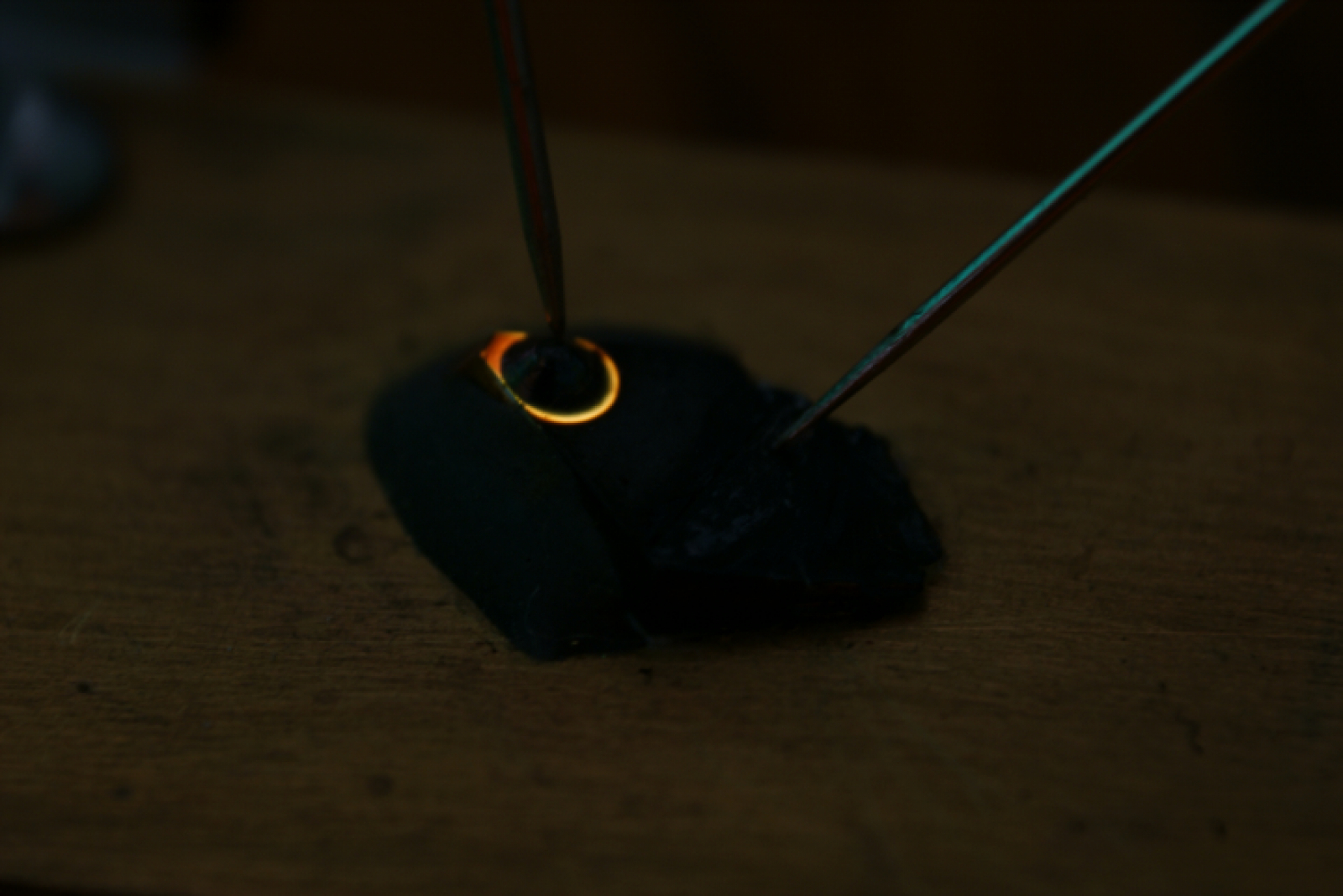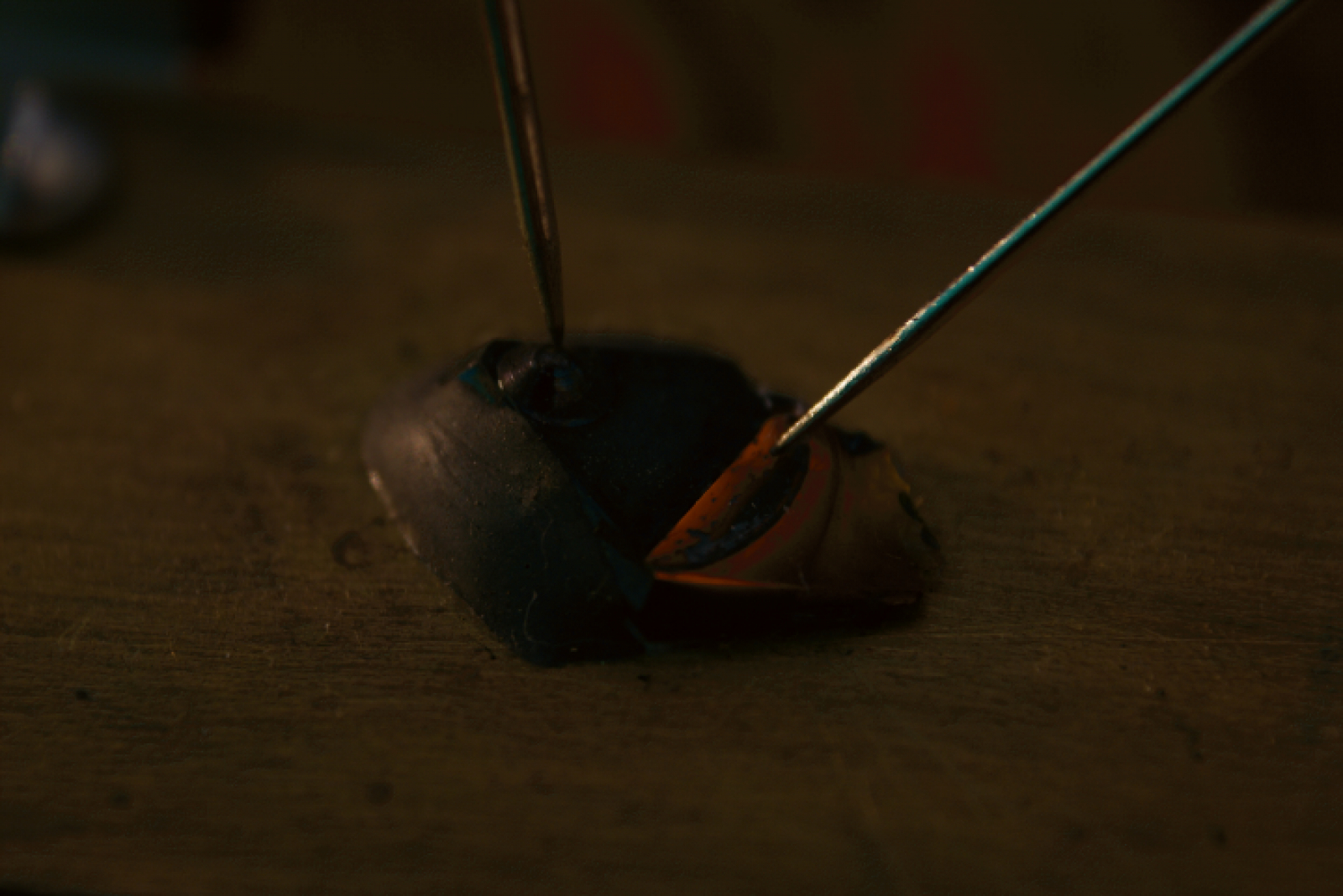Homemade LED
I was trying to make a cat's whisker diode from a beautiful piece of silicon carbide I had laying in my crystal collection, and I noticed a faint glow. Probing further, I found that one of the largest crystals emitted quite a lot of light over an amazingly large area. So I broke off that particular crystal, and mounted it on a brass plate with JB Weld. I then soldered some safety pins in a way that they always touch the right spots. 
 Interesting. I may have to try metals on this crystal with different work functions in the future. I think they make brass safety pins...It is by no means efficient. Dammed thing draws 3A at 12v to emit a measly estimated .5mcd. Everything else turns to heat, VERY fast.Here is the discussion on 4HV if you would like to read more.
Interesting. I may have to try metals on this crystal with different work functions in the future. I think they make brass safety pins...It is by no means efficient. Dammed thing draws 3A at 12v to emit a measly estimated .5mcd. Everything else turns to heat, VERY fast.Here is the discussion on 4HV if you would like to read more.

It glows!
Here are two pictures of the device emitting light. One picture forward biased and one reverse. It emits light both ways! After asking the people on 4HV.org what the hell was going on, I received this answer from Mattski. "What you have is two schottky diodes (metal semiconductor junction) in antiseries. Each metal-semiconductor contact forms a diode, which can point in either direction depending on whether the work function of your contact is greater or smaller than that of the SiC. In either case, when sufficient bias is applied, one will enter reverse breakdown, and the other will then be forward biased and conducting current, and then able to emit light. Given which side lights up, I think your diodes are forward biased with the semiconductor positive wrt the metal, which would mean metal has a lower work function than your SiC."
